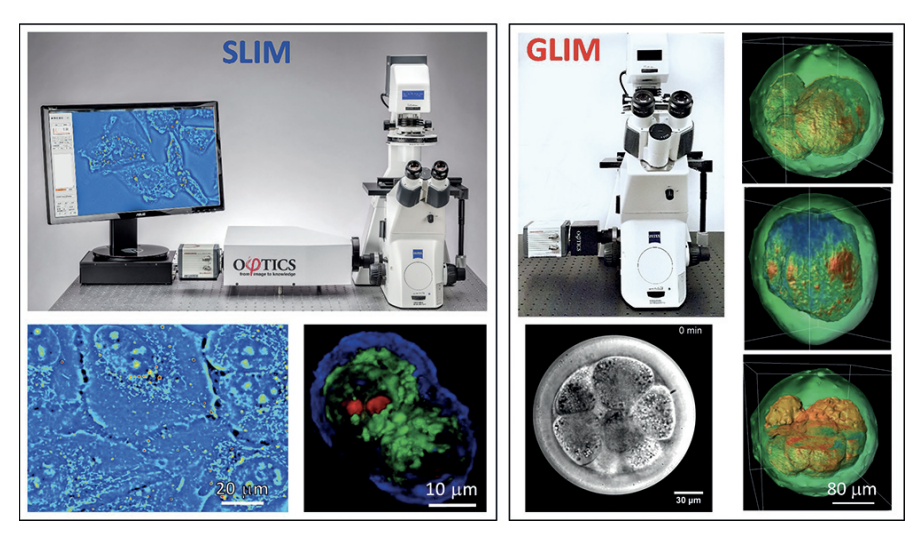3D IMAGING OF LIVE SPECIMENS-QUANTITATIVE PHASE IMAGING WITH SLIM AND GLIM
Gabriel Popescu
Imaging & Microscopy, 4.2018 2018
![]()

An ideal optical imaging method must include a mechanism to reveal the structure of weakly scattering specimens and one to subdue the multiple scattering backgrounds for optically thick samples. Due to their label-free, low-illumination power capabilities, Quantitative Phase Imaging (QPI) methods are: 1) noninvasive and, thus, suitable for stable, long term investigation without photodamage; 2) provide simultaneous information from large fields of view and 3) allow submicron levels of resolution in 3D. Spatial Light Interference Microscopy (SLIM) is an established method for investigating thin, transparent samples, such as single cells. Gradient Light Interference Microscopy (GLIM) is a new QPI technique that provides label-free and quantitative 3D tomographic imaging of tissues, organoids, embryos, model multicellular organisms with high resolution and remarkable contrast. White light illumination provides speckle-free images, which convert to spatially sensitive optical path-length measurements of nanometers. The common path interferometry in GLIM enables temporally sensitive optical path-length measurement down to nanometers. Co-registration with the fluorescence channels of the microscope represents a significant feature which enables control and co-localization experiments based on fluorescence tags.

